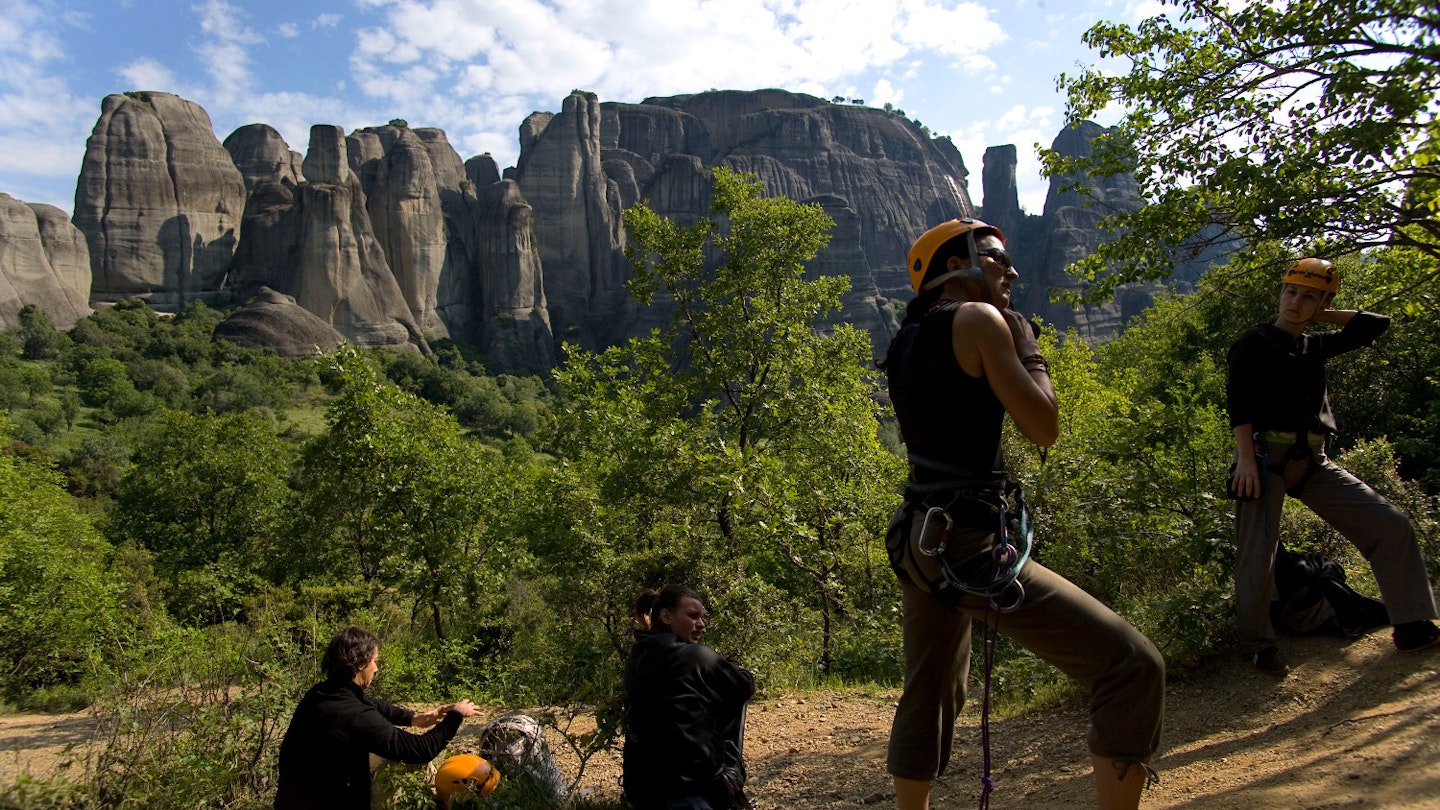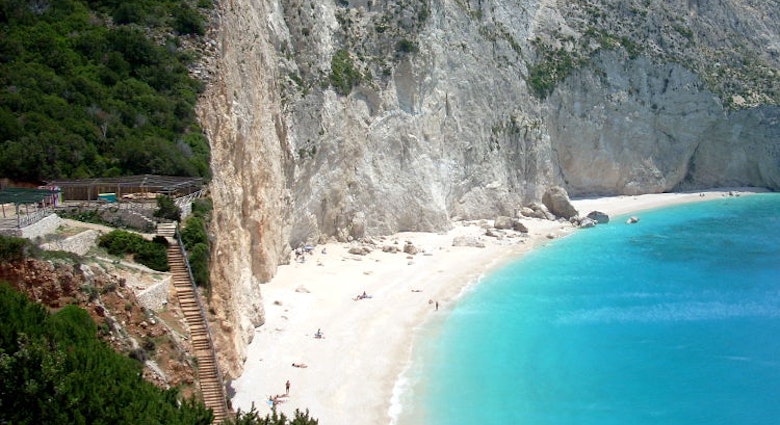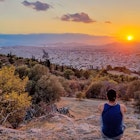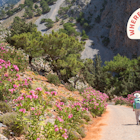As both religious and natural symbols of Greece, Meteora and its monastery-topped pinnacles are high on the list of the country’s most visited sites. Many travellers race through the area – and its six monasteries open to the public – in a day or stay overnight in the villages of Kastraki or Kalambaka.
However, over the last couple of years locals have considerably expanded the adventure offerings in the region. With walking, rock climbing, rafting and cycling opportunities, plus fascinating museums and caves to explore, there’s plenty to keep church-weary visitors busy here for a few blessed days.
Walking the old monks’ trails
A large network of monopatia (old monks’ trails) thread through the region, and you can wander on some of these alone. The most accessible path heads to the beautiful monasteries of Agias Triados and Agiou Stefanou. For those who hoof it alone, a useful booklet is The Footpaths of Meteora by Andonis Kalogirou; alternatively, grab a map (the best is Orama Editions’ 1:8000 Meteora).
For off-piste exploration, Visit Meteora offers some excellent guided half-day or longer walks in the hills, ending up in a couple of the monasteries. If you have a head for heights, opt for the walk to Agio Pnevma (Holy Spirit) rock, one of the oldest and smallest monasteries (not included in the usual monastery itinerary) which offers not only an incredible history lesson but also bird’s-eye views of the area.

Rock climbing (like the hermits)
Not surprisingly, given the region’s extraordinary rock formations and former hermits’ caves, Meteora is a rock climber’s mecca, with all grades of climbs available. Complete novices can test their abilities with Visit Meteora which offers beginners’ (as well as more advanced) rock-climbing sessions.
The same company can organise an adrenaline-boosting ‘scrambling’ tour. It is, well, just what the name says. At times, you are clipped on to a rope as you traverse rock ledges to monasteries and beyond, following original routes once taken by the Meteora’s intrepid hermits.

Blessed cycling and rafting
For a DIY get-the-heart-pumpin’ experience, hire a bicycle from Hobby Shop. There are no limits on where you can head. Remember: the name Meteora comes from the Greek meteoros, which means ‘suspended in the air’. That is, rock pinnacles and steep hills, although you can also venture out into the more leisurely surrounding flatlands. If cycling sounds like too much grunt, motorcycles are also available for hire (the owner is a passionate biker).
For a relaxed, water-based vista of the area, not to mention family fun (kids aged eight upwards can participate), float down the Ionas River for around 9km. We’re not talking wild whitewater here – these are Grade 1 to 2 rapids only – but the thrill is seeing the Meteora rocks from an entirely different viewpoint. That, and the nature experience: ancient plane trees line the banks and birdlife is prolific. Trekking Hellas West Thessaly (trekking.gr) can organise the trip.
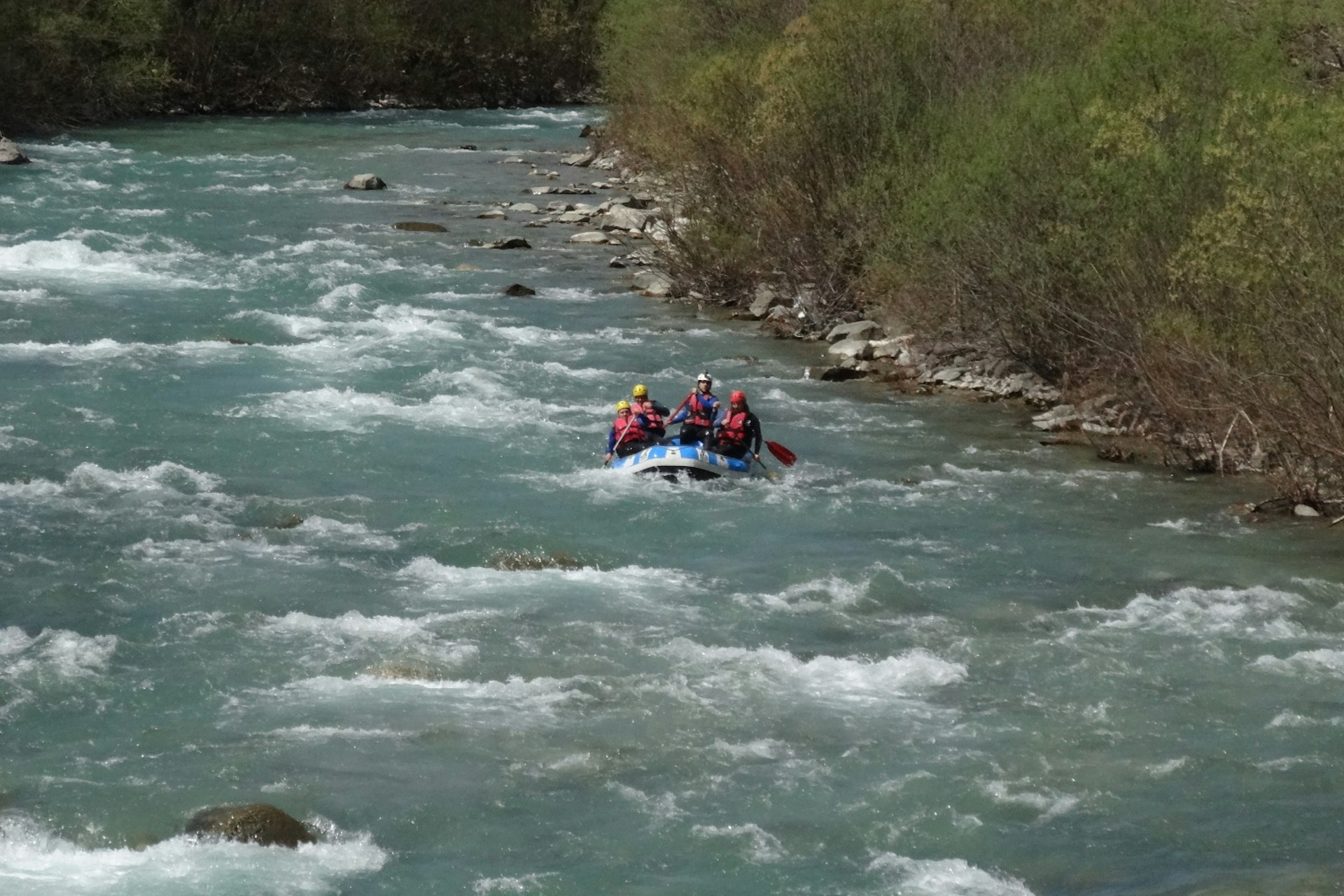
Gorging on the view (on four wheels)
Only 46km south of Kalambaka, the small village of Pyli is the gateway to a stunning gorge, and the views are well worth the drive. Before you speed through Pyli though, make sure you visit its tiny 13th-century Church of Porta Panagia.
From Pyli, one beautiful route winds its way up the side of a deep gorge, through Elati, a mountaintop village that makes you feel as though you’ve been beamed to the Swiss Alps. From here you can cross to the other side of the gorge and return to Pyli in a circle. A more adventurous excursion from Elati is to continue through the Pindos Range to Kalambaka (note this is a longer, full-day trip).
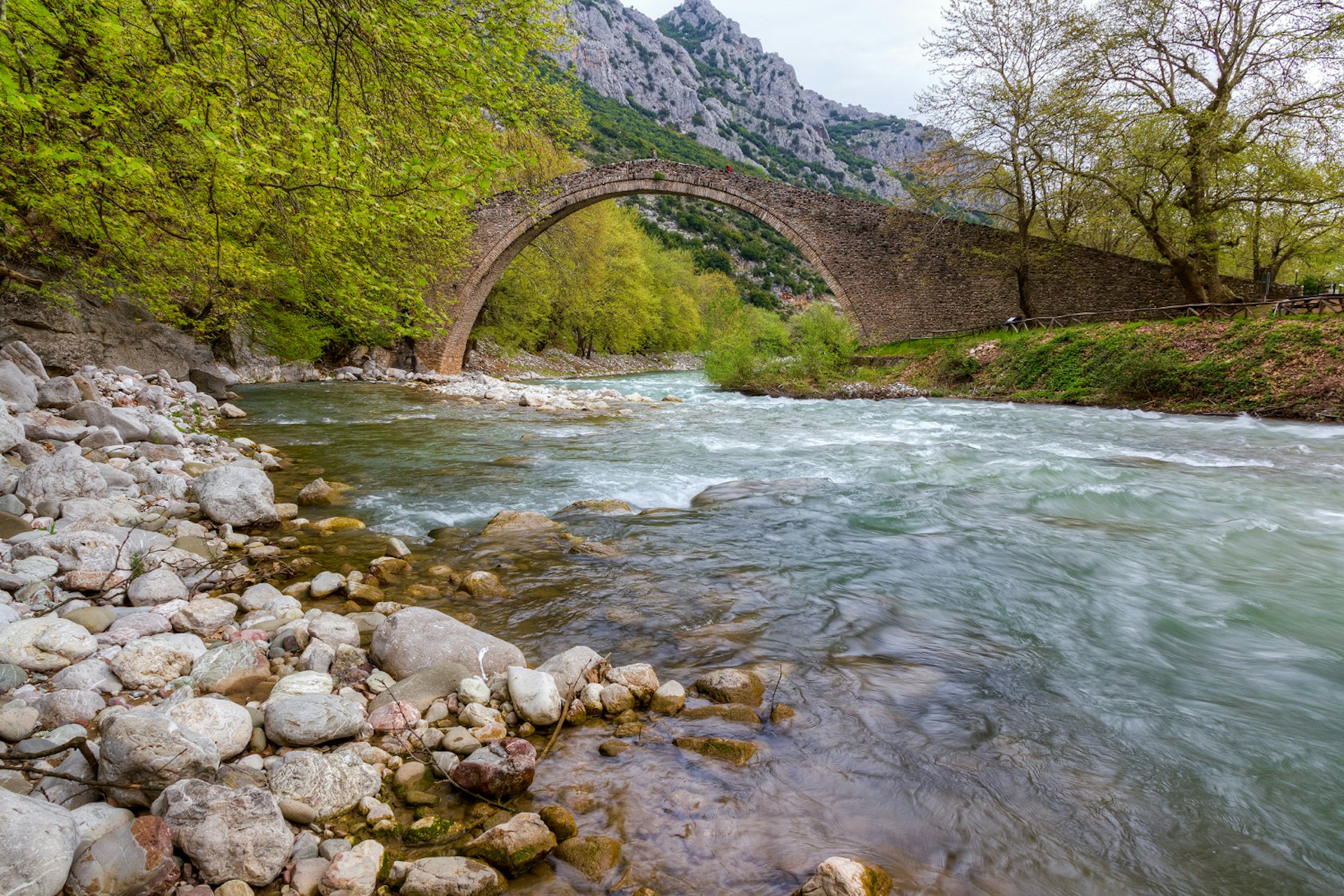
Quirky museums and ancient caves
For something completely off the monastery grid, check out Kalambaka’s two recently opened museums. A labour of love of an avid local, the Museum of Hellenic Culture highlights the world of Greek education and literature (including an original Homer text). The retro exhibits are housed in a specially built, cutting-edge venue. The Museum of Natural History is a taxidermist’s trove – its stuffed animals come from all over the world. For a more local flavour, the upstairs floor has a vast collection of replicas of Greek mushroom species.
For a different historical take on the region, detour 7km southeast of Kalambaka to the fascinating Theopetra cave. Camouflaged in the hillside, the cave interiors feature elements tracing the existence of life here all the way back to the Neanderthals. Researchers believe that a stone wall in front of the cave is 23,000 years old, meaning it’s one of the oldest known structures built by humans.

Make it happen
Kalambaka is five hours’ drive from Athens and it’s most easily reached by bus (ktel-trikala.gr). All buses go to Trikala (22km southeast of Kalambaka); from here, there are regular services to Kalambaka. Trains chug along to Larissa, though you must change services here for Kalambaka (the last stop).
For another memorable experience, soar into Alsos House. Conveniently located close to the walking paths, it’s run by a charismatic, English-speaking local whose passion for (and knowledge of) the area is as impressive as the rocks themselves.
No post-activity relaxation would be complete without a Greek feast. Head straight to Kalambaka’s Taverna To Paramithi where the English-speaking owners will serve up a great home-cooked meal (including whatever is going that day), spontaneous bouzouki (Greek music genre) performances and homemade tsipouro (distilled spirit similar to ouzo).

